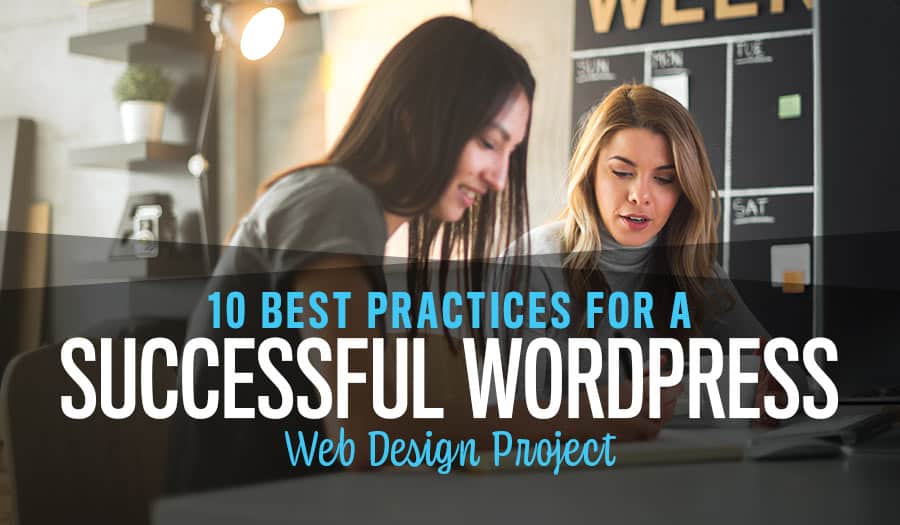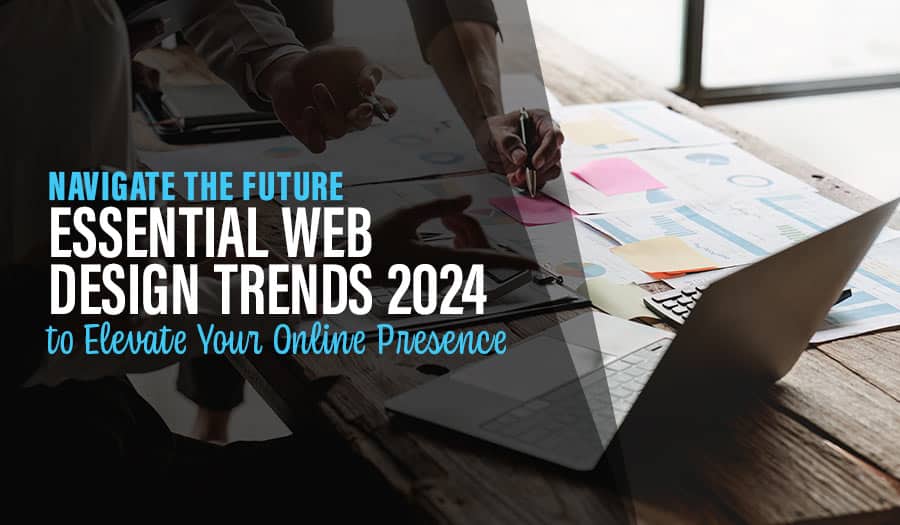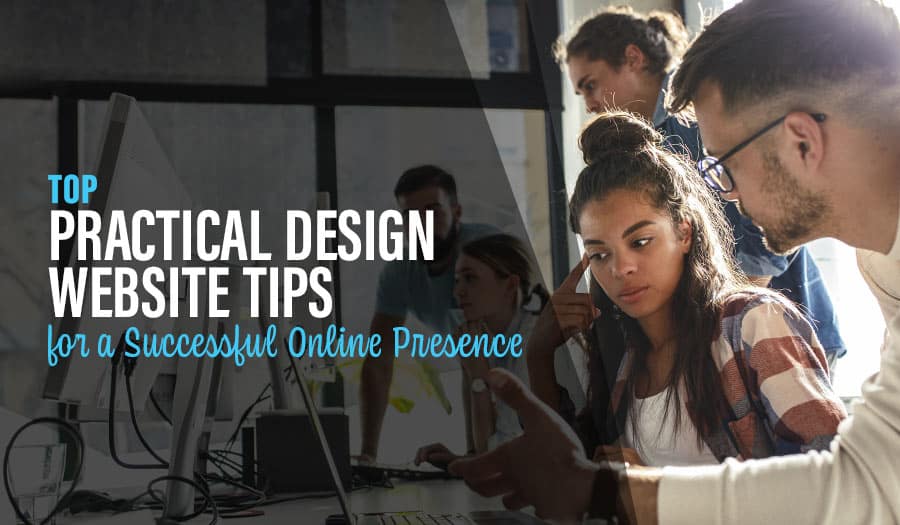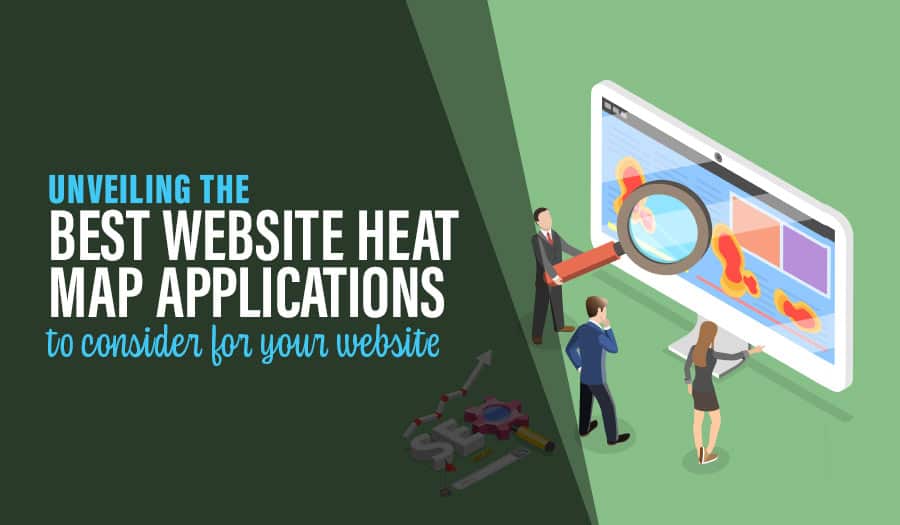So you need a new wordpress site. Whether your old one has just reached the end of its lifespan or you’re improving your online presence in the aftermath of COVID-19, you’ve decided that now is the time for an upgrade that your business and its customers can benefit from.
Better yet: you’ve read about the advantages of WordPress for web design, and chosen it as your platform of choice.
Now, the fun begins. As you dive into the actual process, you will need to keep a few things in mind to keep it on track, on budget, and on time. These 10 best practices will help you make sure that you can build a WordPress website you’re proud of, designed to help your business grow.
10 Best Practices for a Successful WordPress Website Design Project
- Start With Your Website Goals
- Inform Yourself About the WordPress Platform
- Define Your Budget
- Establish a Timeline
- Find the Right Partner
- Establish Regular Check-Ins
- Build a Brand Style (Or Refine Your Current One)
- Check-in on the Testing Process
- Plan for the Hand-off
- Create a Continuity and Maintenance Plan
10 Best Practices for a Successful WordPress Website Design Project
1. Start With Your Website Goals
Before even the first line of code is written or the first graphic is designed, you need to make sure that it all goes in the right direction. That means defining exactly what you need your wordpress site to accomplish.
The answer to this question could range widely depending on your type of business and audience:
- E-commerce merchants look to their websites for their main revenue stream.
- B2C brick-and-mortar businesses looking to communicate basic information and make their business easy to find.
- B2B businesses try to build up their presence as thought leaders and gain the trust of their buyers.
- Nonprofit organisations looking to educate their audience about their cause and the importance of supporting it.
Of course, these are just a few of the basic possibilities. Going into the web design project, it pays to define what you’re working towards as the overarching guide to achieving success.
Quick Tips for setting website goals
- Set measurable goals for your website project.
- Consider the user journey when mapping out the content and design of pages on your site.
- Balance aesthetic appeal with usability to ensure a positive experience for visitors.
- Think ahead to future possibilities and scale when designing a website.
- Develop an SEO strategy tailored to your business’s needs.
- These tips will help you stay focused and organized during the web design project. Pixelfish can also provide valuable insight when creating a website that meets your specific business objectives. Let us help you create an amazing site that drives results! Contact us today to get started.
2. Inform Yourself About the WordPress Platform
Next, it’s time to learn more about both basic and advanced features that come with building a website on the WordPress platform. As mentioned above, there are many benefits to using the WordPress CMS (content management system) but you can only unlock those benefits if you know exactly what to expect and how to leverage those features.
This list of WordPress tutorials is a great place to start educating yourself. It also helps to browse around the platform and its knowledge base. Your goal here should be not to master WordPress, but to have a basic understanding of both the platform and its possibilities.
Quick list of benefits of the WordPress Content Management System
- Easily customisable with plugins and themes
- Search engine-friendly platform
- Secure content management system
- Regular updates to ensure performance and compatibility
- Robust user security features
- Comprehensive media library management tools
- Integration options with other services and platforms
- Easy to integrate with Google Analytics
- User-Friendly Backend
- It is the World’s leading CMS platform
Why a WordPress website is perfect for business
WordPress offers businesses a cost-effective way to create, manage and maintain a website. Offering unlimited scalability, it is an ideal solution for any business need – from creating a simple blog or portfolio website to full ecommerce solutions. With its intuitive design and powerful features, WordPress allows users to customise their websites quickly with the help of themes and plugins. This makes it ideal for businesses of any size and industry, from startups to established enterprises.
In addition to its cost-effectiveness, WordPress offers many security features that ensure your website remains safe from malicious attacks and viruses. It is also regularly updated with the latest security patches so that you can rest assured that your website is always up-to-date and secure. Furthermore, WordPress makes it easy to optimise your website for search engines, helping you to boost online visibility and reach a larger audience.
Beyond its technical capabilities, WordPress also provides an array of flexible options for design and content creation. Its user-friendly interface makes it ideal for businesses who don’t have the ability or resources to hire a developer. WordPress also enables you to easily add plugins and other features to improve the look, feel, and functionality of your website. You can customise almost every aspect of your website using themes, widgets, and plugins so that it is truly unique and tailored to your business’ needs.
WordPress is also highly scalable, so if you need to update the content or design of your website in the future, it can be easily done. With the right hosting, you can enjoy fast loading speeds and a solid foundation for your website that will serve you well over time. WordPress has become one of the most popular and user-friendly platforms for creating beautiful websites. It is easy to learn, simple to use and highly customisable, allowing you to create the website of your dreams without needing to know any code. Its search engine optimisation (SEO) capabilities are also top-notch, making it easier for customers to find your business online.
3. Define Your Budget
No web design project comes without a budget. WordPress as a platform may be open source and free, but you’ll likely need a partner that helps you build it. The process is less expensive than building a site from the ground up on another system, so that’s a great place to start.
Still, defining a specific budget or at least a budget range makes sense. That way, you know exactly how much you can spend going into the project and can ensure that you don’t go over with unexpected extras or any miscalculations. This guide can help you understand the parameters and costs of building a WordPress site.
Quick tips for defining a Budget for your own Website
- Research and list the must-haves for your website
- Consider potential WordPress Plugins and make sure they are included in your budget
- Identify any potential future updates or changes you may need to account for in the budget
- Take into consideration hosting, domain registration, security measures, and ongoing maintenance costs
4. Establish a Timeline
With your budget in mind, it’s time to start thinking about your timeline. In other words, when would you be ready to devote your resources to building the website, and when would it need to be finished for you to reach your marketing, business, and website goals effectively?
COVID-19 accelerated the web design timeline for many of our clients. The good news is that you can set up a quality website on WordPress for a relatively small budget. Of course, you’ll still need to allow some time for planning, developing, and designing. Having a clear start and end point can help you build those parameters and set expectations.
What is a reasonable timeline for a website project?
Generally speaking, it can take anywhere from 4-8 weeks to get your website up and running. Of course, the actual timeline of your project will depend on factors such as the complexity of the site, the amount of content that needs to be created, and how quickly feedback is provided.
5. Find the Right Partner
All the above steps are essentially pre-ambles to help you prepare for this one. With your goals, base knowledge, budget, and timeline in mind, it’s time to start thinking about the person or agency you want to partner with for your website project.
Here, finding a partner specialising in WordPress website design is crucial. It ensures that you have experts on your side who are not just familiar with the platform but have mastered building WordPress websites on it. Look for recommendations from references, and don’t forget to check out the agency’s portfolio to get a feeling of the types of WordPress websites they’ve designed in the past.
This step will take some time, and rightfully so. After all, your future partner will be the lynchpin to reaching your goals and spending your budget wisely. The right agency also becomes a long-term partner who helps you finish your initial website and keep it up to date over time (more on that below).
Tips for finding the right Website Partner for your upcoming Web Design Project
- Don’t be afraid to shop around – do your due diligence and compare different agencies before you make a decision.
- Ask for referrals from friends and colleagues who have worked with web designers in the past, as well as search online reviews.
- Look at the portfolios of each agency to get an idea of their style and effectiveness.
- Have a list of questions prepared that you can ask each agency to get more information about their process, timeline, expertise, pricing structure and customer service policies.
- Make sure to clarify the goals of your website before beginning so all parties are on the same page from day one.
6. Establish Regular Check-Ins
As soon as you find a partner, define the way in which you want to work with them. Chances are if you choose an experienced agency, they have a standard workflow and process. Ask them to share it, and make sure it works with you and your own schedule and abilities.
Regular check-ins with your WordPress agency will be one of the most important parts of that working relationship. During these check-ins, you should receive progress briefings and make time for potential questions and discussions. Especially as your new website evolves, there might be changes and adjustments that need to be made, and it’s important to learn about those and make relevant decisions sooner rather than later.
Make sure you have a plan and thought process for providing feedback to your WordPress agency so they can move the project forward in the most efficient manner.
Finally, if you’re working with an experienced WordPress agency, they can provide helpful advice and guidance. Ask them questions on anything related to website development, from troubleshooting to optimisation techniques. You may even learn something new that can help you with your project. With a mutual understanding and trust, it’s easier to establish a successful working relationship with your WordPress agency.
7. Build a Brand Style (Or Refine Your Current One)
As you establish a process, your partner will also need guidance on how they should build your wordpress site. In most cases, that means establishing a basic brand guide that communicates your preferred style in a few key areas:
- Share your company logo and how you would prefer it to be used.
- Share the key brand colours you want to be incorporated into the website.
- Define the fonts that you typically use when designing or writing materials for your company.
- Share some basic information about your brand ‘personality’. Are you serious or casual? Educational or news-style oriented?
If you don’t have the answers to all of these questions, ask your partner to help you define them. In most cases, they will. And if you already have the above defined, ensure they’re still relevant before sharing them for your website.
Top tips for creating a branding guidelines pack
- Be consistent. Use the same colours, fonts and images throughout your materials to create a unified look and feel.
- Be flexible. Allow for variations on the guidelines when creating new artwork but always maintain a level of consistency so as not to dilute the brand identity.
- Provide examples of how elements should be used – some visuals are worth a thousand words.
- Be precise. Provide measurement guidelines and explain how each element should look when used in different formats.
- Be accessible. Make sure the brand guidelines are easy to access and understand by creating detailed documents or visual references that everyone can refer back to.
- Keep it up-to-date. Your branding will constantly evolve, so make sure you regularly review and update the documents to reflect any changes.
8. Check in on the Testing Process
During one of your early check-ins, it makes sense to check with your partner about exactly how they’ll test the pieces of your new website they’re building. Will there be usability tests or basic functionalities? How about UX testing to ensure the site resonates with your audience?
For most WordPress web design agencies, these types of tests are baked into the process. It makes sense to understand how and when they’ll happen, so you can be reassured that the final product will work as intended for your target audience.
9. Plan for the Hand-off
With the above processes in place, your wordpress site design project should move along relatively smoothly. That means it’s time to start thinking about what happens when the website is finished and you’re ready to take it over.
Start talking to your agency partner about what that hand-off looks like. Will they or you be responsible for procuring the host? What are the basic steps needed to register your site for Google searches?
You might also want to talk about potential training for staff who will use and update the site on an ongoing basis. That way, there should be no surprises by the time the website is ready to go live and help your business grow.
What to cover in a website handover and training session
- Hosting: Who is responsible for procuring the hosting plan, and how will it be set up?
- Domain Name: How will your domain name be registered and managed?
- Image Use: Are images properly licensed and optimized for the Web?
- Technical Setup: What technical setup is necessary to keep your website running smoothly?
- Content Management System (CMS): How will content be managed and updated?
- Search Engine Optimization (SEO): What steps will be taken to ensure visibility on search engines?
- Analytics & Tracking: How will you track your website’s performance?
- Support & Maintenance: What kind of customer service will you provide after a successful launch?
These are just some of the topics to cover in a handover and training session. Make sure you also discuss expectations, timelines, and budget. Your client should leave feeling informed and excited about their new website – ready to go live and share with the world!
10. Create a Continuity and Maintenance Plan
Finally, it’s important to remember that a finished website does not necessarily mean the end of the partnership. As alluded to above, some partners are willing to stay with you or at least be available for basic website maintenance, significant updates, or emergency needs like a server failure.
Whether you’ll be working with a partner on these issues depends on your budget for ongoing website maintenance. Either way, start planning for these contingencies now. That way, you’ll be well-prepared to act quickly, should you need to do so.
Why your WordPress site needs an ongoing maintenance plan
A maintenance plan is essential for the ongoing success of your WordPress website. A regular maintenance routine will help ensure that security vulnerabilities are addressed quickly and that your content remains up to date. It can also help keep the search engine rankings of your site high, since those are directly influenced by fresh content. Ultimately, a good maintenance plan will enable you to keep your website running smoothly and consistently.
To create a maintenance plan, you’ll need to consider several factors including the following:
- Security: You’ll want to be sure that all security settings are up-to-date and that any potential vulnerabilities have been identified and remedied. Doing regular scans of your site is a must.
- Updates: Keeping your themes, plugins and core WordPress files up-to-date is an important part of maintaining a secure website. This also ensures that any new features are available for use.
- Backup: You’ll want to be sure that you have backups of all the data on your site in case something goes wrong. It’s best to do a backup at least once a month, or anytime before you make major changes to your site.
- Performance: It’s important to monitor the performance of your website and do regular checks for any potential issues that could be slowing down your site. Making sure all image files are optimized is also key.
By following these best practices, you can ensure that your site is secure and running efficiently. Not only will this help protect against malicious attacks, but it will also keep your visitors coming back for more.
Are You Ready to Embrace the WordPress Web Design Process?
WordPress website design comes with many advantages, from cost to security. Still, it requires a few steps you should absolutely take through that process to ensure you get the right website for your needs. The above steps can help you make sure that you can come out of the process with an online presence designed to help you reach your business and marketing goals.
To get there, you’ll need a reliable partner with dedicated expertise in WordPress web design. That’s where we come in. PixelFish has spent years helping businesses like yours build, expand, and optimise their online presence. Contact us to start the conversation if you’re ready to do the same.
Speak to the WordPress experts and take your business to the next level with a Pixel Fish Website.
Check out some of our latest Website Design projects.
Further Reading
7 Can’t Miss Digital Marketing Trends for 2020
10 Top Reasons to use Gravity Forms
8 Social Media Plugins for Your WordPress Website
Related Articles
5 Reasons Quality Copywriting Matters for Your Website
Why Your Website Should Start With Why
Why Your Business Needs Social Media Website Integration
Understanding SEO vs SEM vs SMM
5 Steps on How to Optimise Your Website Images for Online Success
Top 8 Advanced WordPress Features and Plugins to Beat Your Competition
9 Business Web Design Package Features Your New Website Must Have
How to Create a Website Budget
On Track: 5 Steps to Keep Your Website on Budget and On Time
5 Small Business Social Media Best Practices You Should Know
How to Choose a Sydney Web Design Agency Perfect for Your Business
5 Steps to a Small Business Marketing Strategy Anyone Can Follow



